Found by Chance, Treasures
From a Golden Age

COLIN SIMPSON
Jinsha Site Museum, Chengdu
CHENGDU, the capital of Sichuan province in south-west China, looks like a typical modern Asian city. Drive past the gleaming glass towers of the business district, or visit the vast technology parks, and you get the sense of a place completely in tune with the modern world.
However, it’s also a historic city, and though the traditional Chengdu may not be immediately apparent amid the ultramodern urban landscape, there are some remarkable ancient sites that are well worth seeking out.
Chengdu was founded 2,300 years ago, but the history of civilisation in the area goes back even further. The bronze age Shu kingdom built a city at Jinsha, now a suburb of Chengdu, 3,000 years ago.
The site was unknown until 2001, when it was discovered by chance. Contractors carrying out excavation work for a sewage system for a new development came across some ancient remains, and subsequent excavations by archaeologists uncovered a vast treasure trove of artefacts.

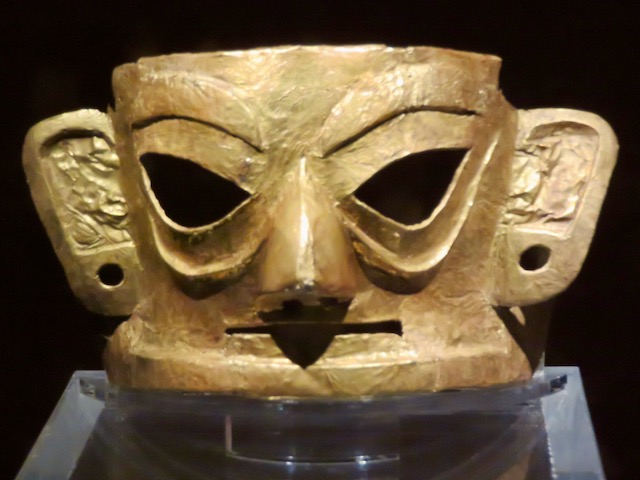
They include a disc of gold foil measuring 12.5 cm across and just 0.2 mm thick, with cut-out shapes of the sun and four birds (main picture above). The beautiful design has become an official symbol of China’s cultural heritage, and can be seen on buildings across the country. The remarkable object was nearly missed by archaeologists digging at the site as, over the millenia, it had become rolled up into a small ball.
The golden sun bird is just one of thousands of items uncovered, and it and many others are on display at the purpose-built Jinsha Site Museum. They include other gold objects, exquisite bronze pieces and works made of jade. The weird, striking designs and remarkable level of craftsmanship make this an outstanding display. The artefacts, which date from between 1,200 BC and 650 BC, would cause a sensation if they went on show in a European capital.


A large area that was excavated by archaeologists is open to visitors, who can see where the most important objects were found. However, this section is only part of the ancient city’s sacrificial area, which in turn was just one of a number of districts. Much of it remains unexplored, leaving the tantalising possibility of further remarkable discoveries being made in the future. Evidence of the district’s sacrificial role includes tons of elephant tusks and thousands of boar tusks and deer horns.
Visiting a site like this is a reminder of China’s remarkable and complex history, with its numerous dynasties, its defeats and triumphs, and the many advances in science and technology achieved there over millennia. I, for one, was taught nothing about this great and enduring civilization at school.
After taking in the wonders of Jinsha, visitors can unwind in Chengdu’s ancient streets at the Kuanzhai Alley Historical and Cultural Conservation Area. Traditional buildings, some dating from the Qing Dynasty (1644-1911), have been restored and turned into shops, bars and restaurants, creating a lively, buzzing tourism and entertainment district.

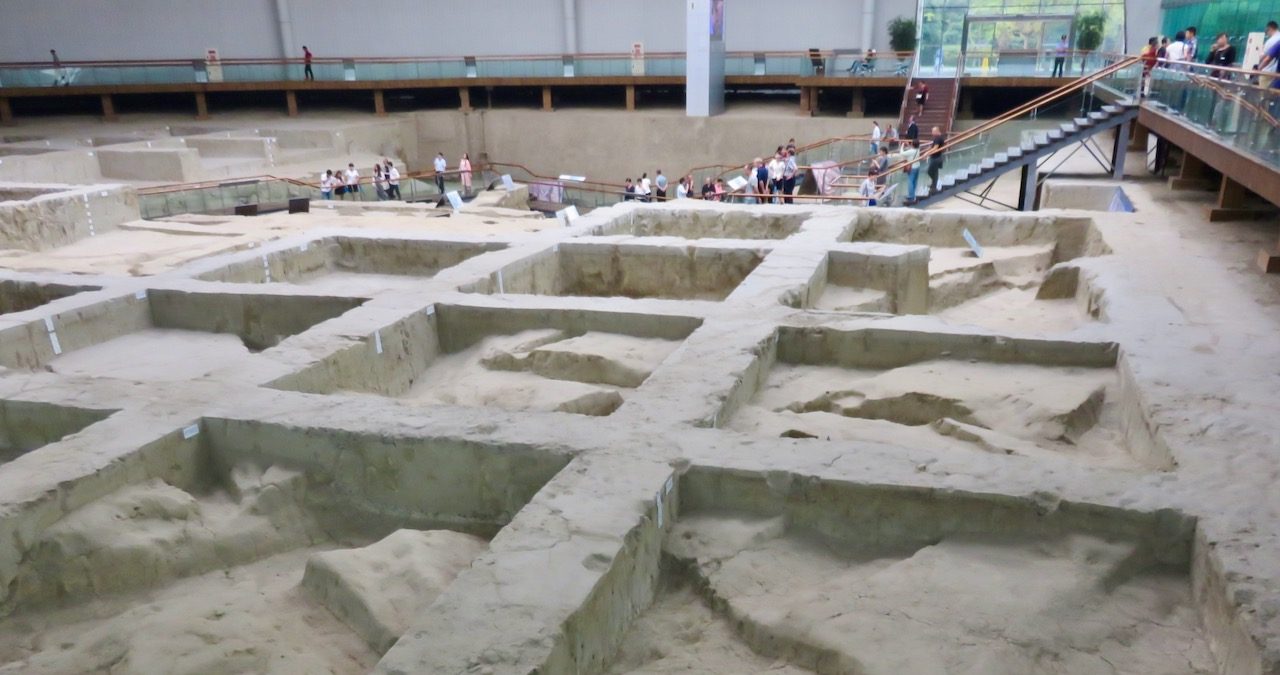
Top photo: The golden sun bird artefact on display at the Jinsha site.
NEED TO KNOW
ADDRESS: 2 Jinsha Site Road, Qingyang District, Chengdu. GETTING THERE: Metro Line 7, Jinsha Site Museum Station, Exit C; Metro Line 2, Yipintianxia Station, Exit B; buses and the Chengdu Tourist Destination Shuttle also go to the site. OPENING HOURS: 9 a.m. to 6 p.m (last admission 5 p.m.), closed Mondays except on official Chinese holidays. TICKETS: Adults 70 yuan; children aged 7 to 18 and full-time students half-price; over-60s and disabled free. EMAIL: cdjsbwg@jinshasitemuseum.com. PHONE: (+86) 028 87303522.
July 2020
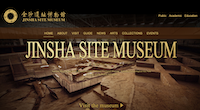 OFFICIAL WEBSITE is better than many online English-language offerings about tourism sites in China, and gives a good idea of what to expect. READ MORE
OFFICIAL WEBSITE is better than many online English-language offerings about tourism sites in China, and gives a good idea of what to expect. READ MORE
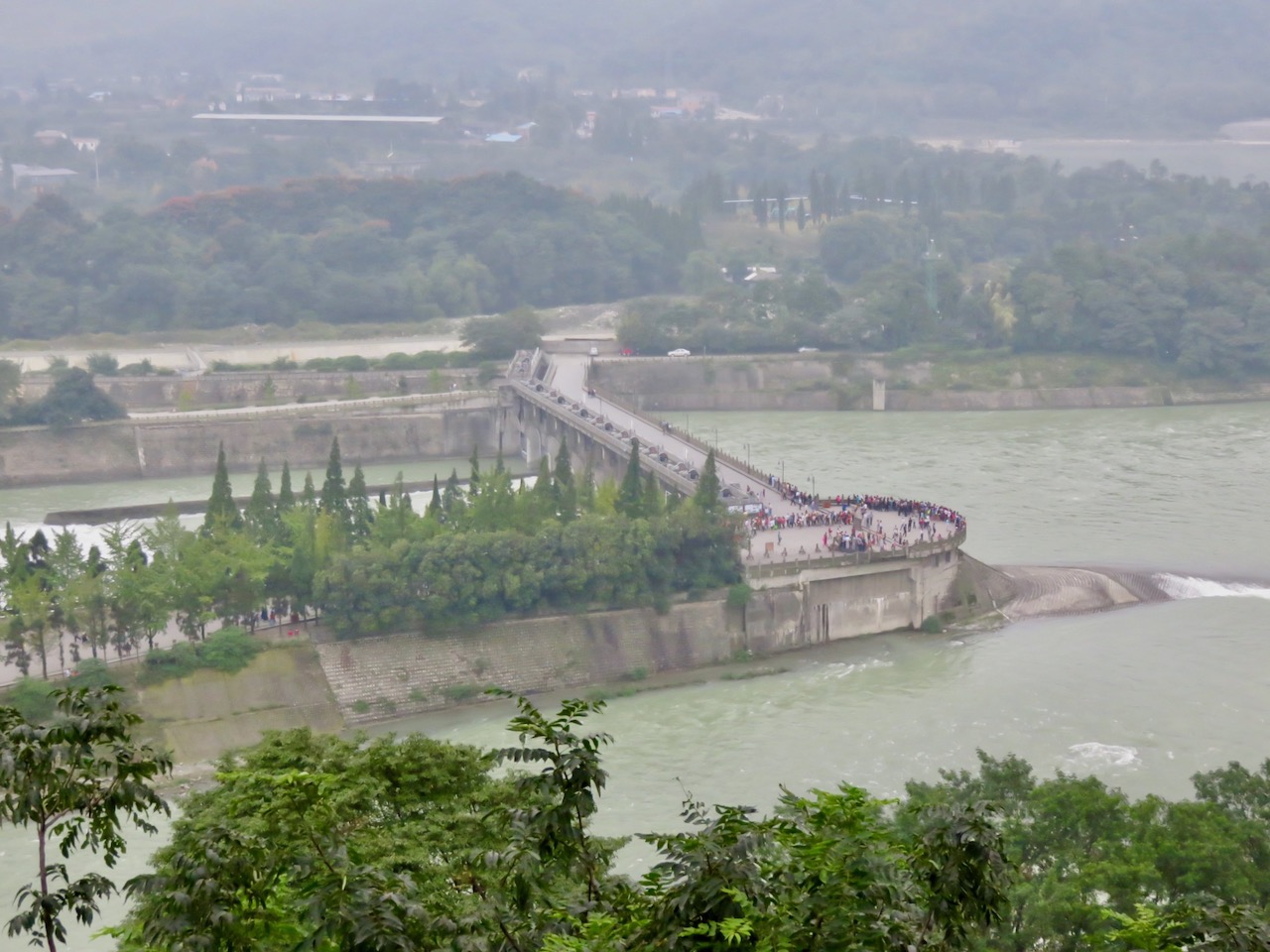
Millennia-Old Engineering Marvel
Sends Water to Modern City
VISITORS to this part of China can see another ancient wonder – the Dujiangyan Irrigation Project. Around 256 BC, a huge channel was hacked through Mount Qingcheng to divert water from the Min River, a major tributary of the Yangtze, and prevent flooding. The system sends water to Chengdu 50 kilometres away, and irrigates fields in the Chengdu Plain.
The design automatically supplies a larger proportion of the river’s water to the city when the level is low, and prevents flooding when it is high. Chengdu’s prosperity through the centuries has relied on this bountiful supply.
The water conservancy system was devised by Li Bing – a governor, engineer and hydrologist – during China’s Warring States period. King Zhao of Qin gave Li Bing 100,000 pieces of silver for the project, and tens of thousands of people are said to have worked on it. Its completion brought an end to flooding in the area, prompting grateful villagers to build a shrine to Li Bing. Mount Qingcheng was the birthplace of Taosim, and there are a number of ancient temples in the area.
Dujiangyan became a UNESCO World Heritage Site in 2000, with officials describing it as “a major landmark in the development of water management and technology… still discharging its functions perfectly.” Even the devastating 2008 Sichuan earthquake failed to halt the flow of water – the system was not damaged.
The system supplies Chengdu — population 14 million — with 80 per cent of the water it consumes. As well as providing water for agricultural irrigation, it also delivers tapwater and supplies many of Chengdu’s cutting-edge manufacturing plants. The fact that modern factories receive water from this ancient source perfectly expresses the interconnection of old and new in Chengdu.
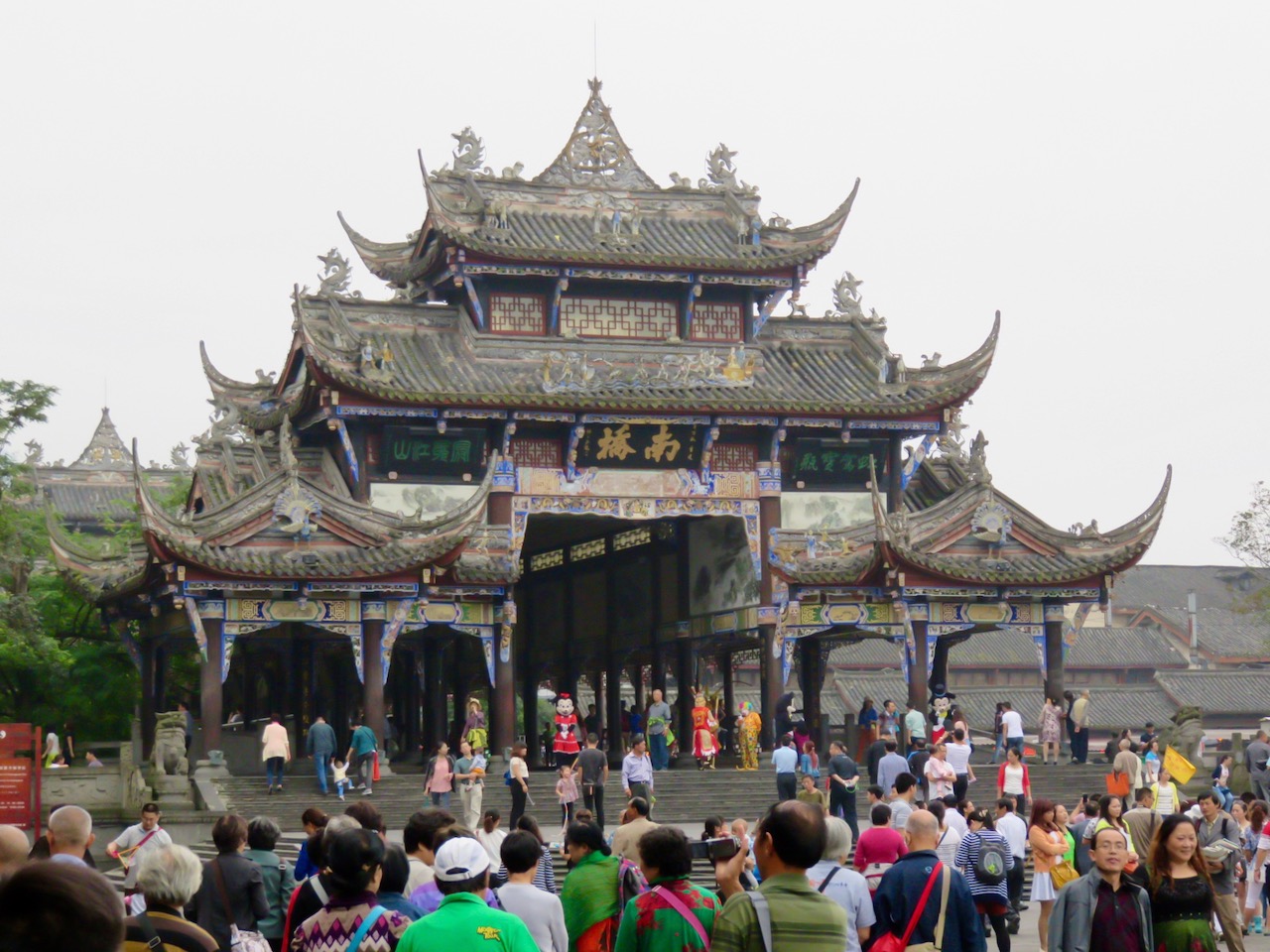

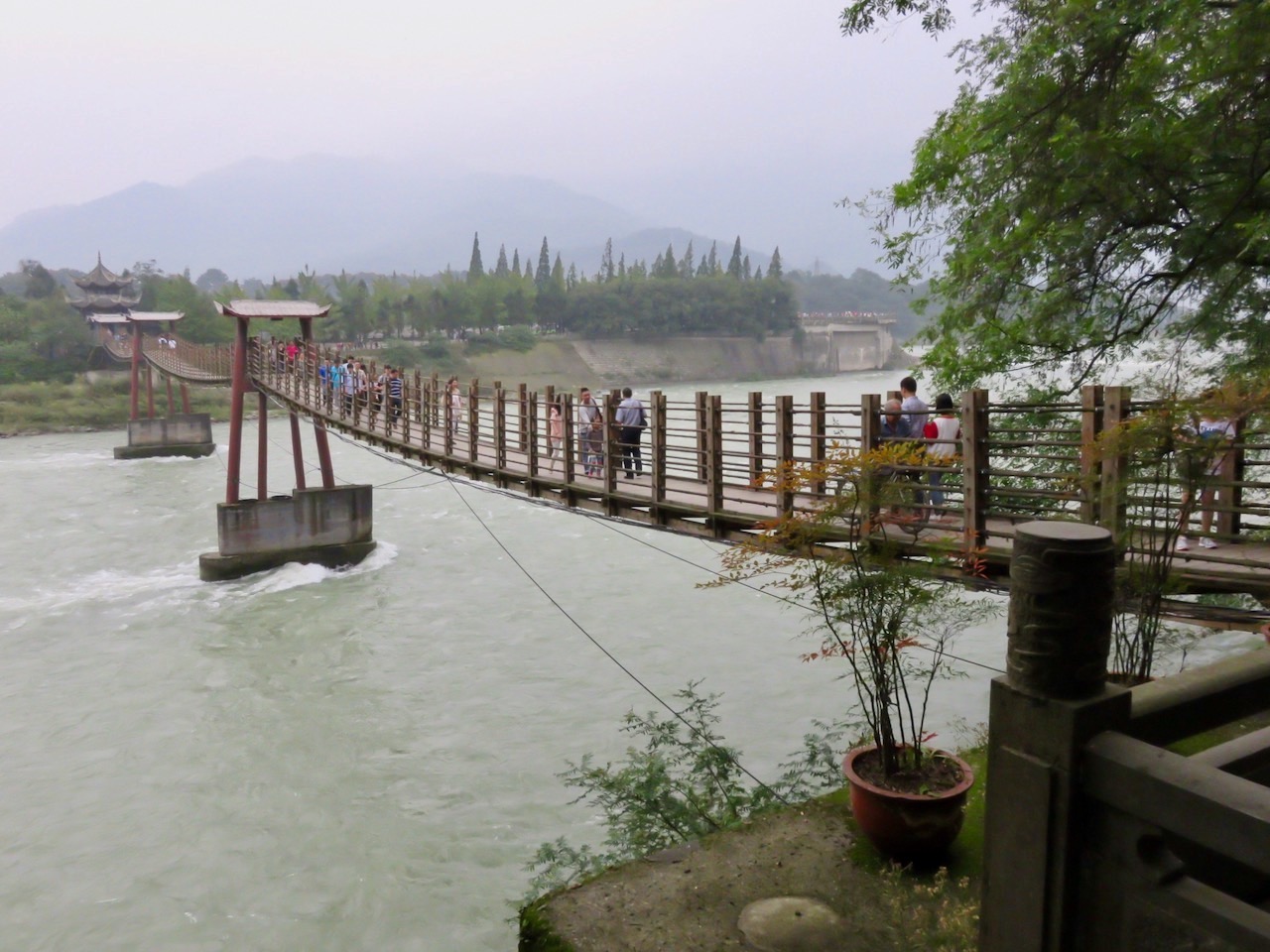

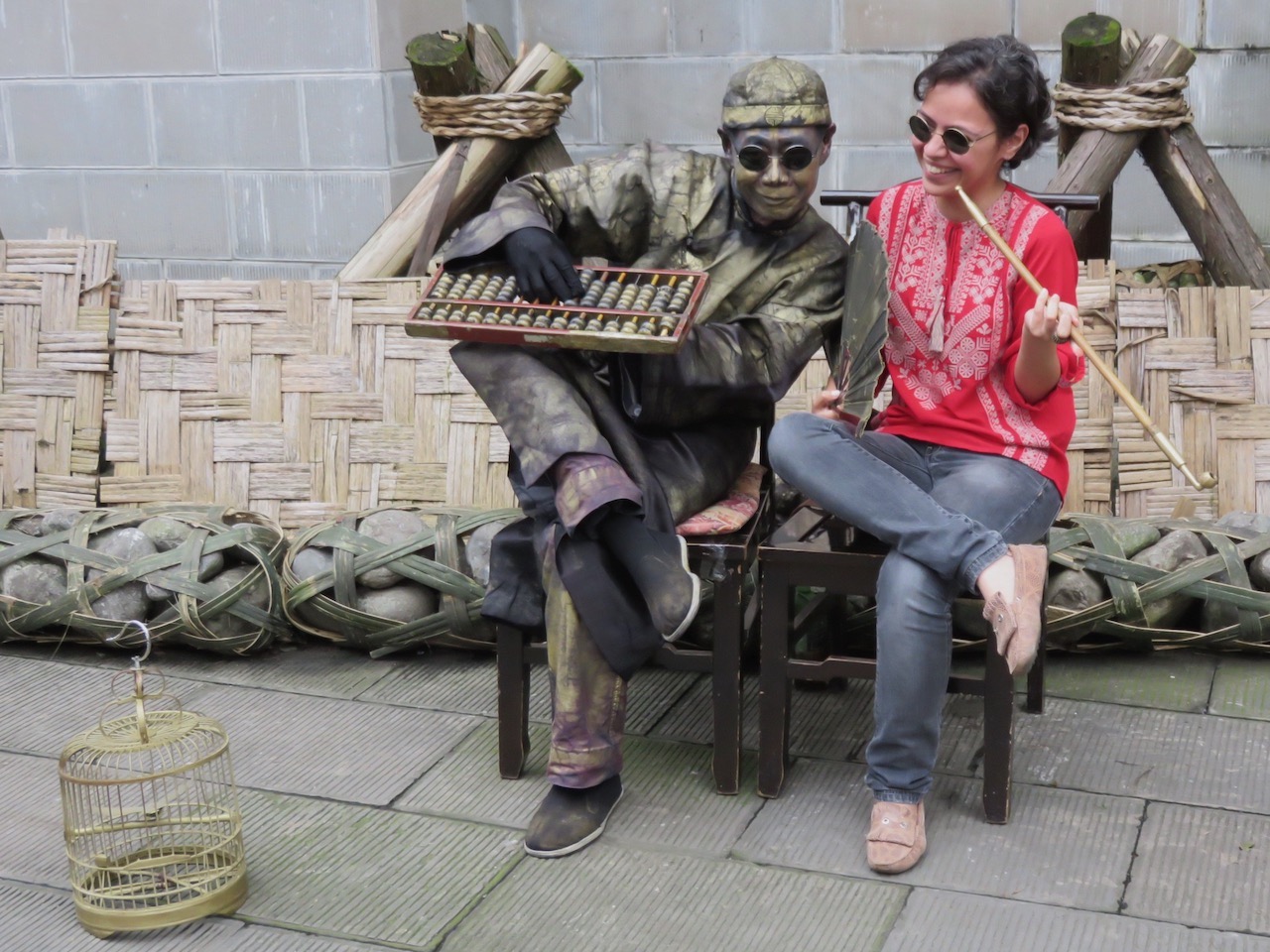


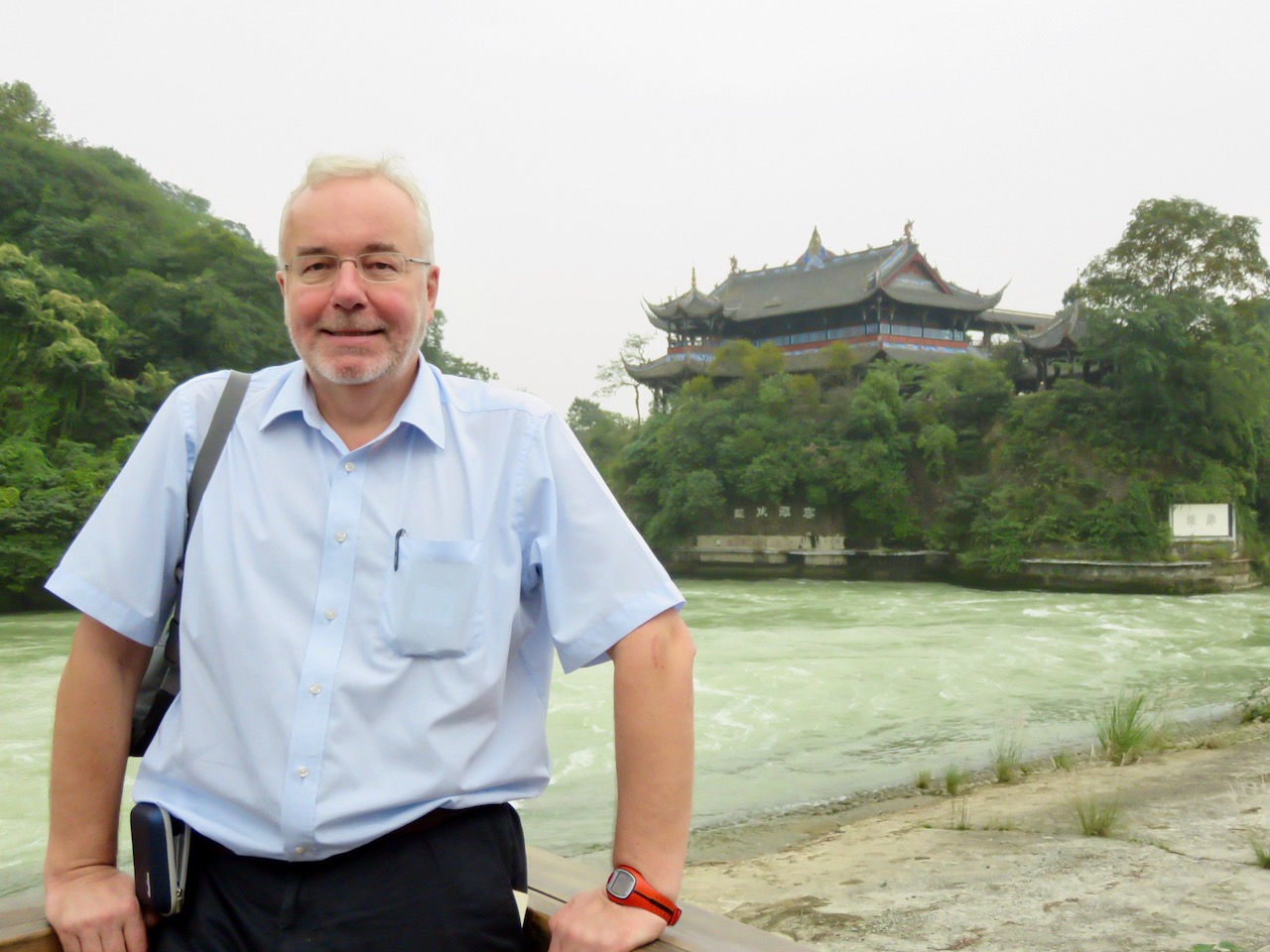
NEED TO KNOW
LOCATION: On the Min River at the west of Dujiangyan. GETTING THERE: Travel from Chengdu to Dujiangyan by car, high-speed train or bus. OPENING HOURS: March 2 to Nov. 30: 8 a.m. to 6 p.m.; Dec. 1 to March: 8 a.m. to 5.30 p.m. TICKETS: 90 yuan per person. Nearby attractions include the Dujiangyan Panda Base.
July 2020
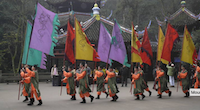 UNESCO’s VERDICT: “Dujiangyan Irrigation System is not only a living heritage of 2,000 year-old design and engineering ideas; it is also still in use today.” READ MORE
UNESCO’s VERDICT: “Dujiangyan Irrigation System is not only a living heritage of 2,000 year-old design and engineering ideas; it is also still in use today.” READ MORE
RELATED
 CAVES FULL OF TREASURE: For 56 years, Fan Jinshi tended a treasure trove of ancient Buddhist masterpieces at the Mogao Caves in China. Now she’s been rewarded with “Asia’s Nobel Prize”, worth $2.5 million… READ MORE
CAVES FULL OF TREASURE: For 56 years, Fan Jinshi tended a treasure trove of ancient Buddhist masterpieces at the Mogao Caves in China. Now she’s been rewarded with “Asia’s Nobel Prize”, worth $2.5 million… READ MORE
 BET YOU’LL LOVE THESE PANDAS: It’s a hot, lazy, high-summer morning as I turn up at the Macau Giant Panda Pavilion – and the idle mood extends to the stars of the show… READ MORE, WATCH VIDEO
BET YOU’LL LOVE THESE PANDAS: It’s a hot, lazy, high-summer morning as I turn up at the Macau Giant Panda Pavilion – and the idle mood extends to the stars of the show… READ MORE, WATCH VIDEO
RECOMMENDED
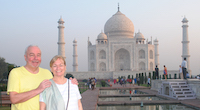 WELCOME TO OUR WORLD! Afaranwide’s home page – this is where you can find out about our latest posts and other highlights. READ MORE
WELCOME TO OUR WORLD! Afaranwide’s home page – this is where you can find out about our latest posts and other highlights. READ MORE
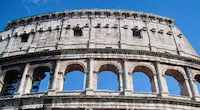 TOP 10 VIRTUAL ATTRACTIONS: Many of the world’s most popular tourists sites are closed because of the coronavirus crisis, but you can still visit them virtually while you’re self-isolating. READ MORE
TOP 10 VIRTUAL ATTRACTIONS: Many of the world’s most popular tourists sites are closed because of the coronavirus crisis, but you can still visit them virtually while you’re self-isolating. READ MORE
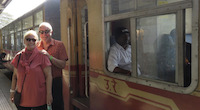 SHIMLA, QUEEN OF THE HILLS: Government officials once retreated to Shimla in the foothills of the Himalayas to escape India’s blazing hot summers. Now tourists make the same journey. READ MORE
SHIMLA, QUEEN OF THE HILLS: Government officials once retreated to Shimla in the foothills of the Himalayas to escape India’s blazing hot summers. Now tourists make the same journey. READ MORE
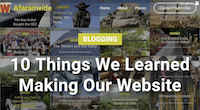 TEN THINGS WE LEARNED: Our up-to-the-minute guide to creating a website, one step at a time. The costs, the mistakes – it’s what we wish we’d known when we started blogging. READ MORE
TEN THINGS WE LEARNED: Our up-to-the-minute guide to creating a website, one step at a time. The costs, the mistakes – it’s what we wish we’d known when we started blogging. READ MORE
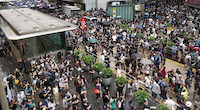 TROUBLED TIMES FOR EXPATS: Moving abroad can seem an idyllic prospect, but what happens when sudden upheavals or the inescapable realities of life intrude? READ MORE
TROUBLED TIMES FOR EXPATS: Moving abroad can seem an idyllic prospect, but what happens when sudden upheavals or the inescapable realities of life intrude? READ MORE
LET'S KEEP IN TOUCH!
Found by Chance, Treasures From a Golden Age

COLIN SIMPSON
Jinsha Site Museum, Chengdu
CHENGDU, the capital of Sichuan province in south-west China, looks like a typical modern Asian city. Drive past the gleaming glass towers of the business district, or visit the vast technology parks, and you get the sense of a place completely in tune with the modern world.
However, it’s also a historic city, and though the traditional Chengdu may not be immediately apparent amid the ultramodern urban landscape, there are some remarkable ancient sites that are well worth seeking out.
Chengdu was founded 2,300 years ago, but the history of civilisation in the area goes back even further. The bronze age Shu kingdom built a city at Jinsha, now a suburb of Chengdu, 3,000 years ago.
The site was unknown until 2001, when it was discovered by chance. Contractors carrying out excavation work for a sewage system for a new development came across some ancient remains, and subsequent excavations by archaeologists uncovered a vast treasure trove of artefacts.


They include a disc of gold foil measuring 12.5 cm across and just 0.2 mm thick, with cut-out shapes of the sun and four birds (main picture above). The beautiful design has become an official symbol of China’s cultural heritage, and can be seen on buildings across the country. The remarkable object was nearly missed by archaeologists digging at the site as, over the millenia, it had become rolled up into a small ball.
The golden sun bird is just one of thousands of items uncovered, and it and many others are on display at the purpose-built Jinsha Site Museum. They include other gold objects, exquisite bronze pieces and works made of jade. The weird, striking designs and remarkable level of craftsmanship make this an outstanding display. The artefacts, which date from between 1,200 BC and 650 BC, would cause a sensation if they went on show in a European capital.


A large area that was excavated by archaeologists is open to visitors, who can see where the most important objects were found. However, this section is only part of the ancient city’s sacrificial area, which in turn was just one of a number of districts. Much of it remains unexplored, leaving the tantalising possibility of further remarkable discoveries being made in the future. Evidence of the district’s sacrificial role includes tons of elephant tusks and thousands of boar tusks and deer horns.
Visiting a site like this is a reminder of China’s remarkable and complex history, with its numerous dynasties, its defeats and triumphs, and the many advances in science and technology achieved there over millennia. I, for one, was taught nothing about this great and enduring civilization at school.
After taking in the wonders of Jinsha, visitors can unwind in Chengdu’s ancient streets at the Kuanzhai Alley Historical and Cultural Conservation Area. Traditional buildings, some dating from the Qing Dynasty (1644-1911), have been restored and turned into shops, bars and restaurants, creating a lively, buzzing tourism and entertainment district.


Top photo: The golden sun bird artefact on display at the Jinsha site.
Sign up for our FREE newsletter and never miss a post!
NEED TO KNOW
ADDRESS: 2 Jinsha Site Road, Qingyang District, Chengdu. GETTING THERE: Metro Line 7, Jinsha Site Museum Station, Exit C; Metro Line 2, Yipintianxia Station, Exit B; buses and the Chengdu Tourist Destination Shuttle also go to the site. OPENING HOURS: 9 a.m. to 6 p.m (last admission 5 p.m.), closed Mondays except on official Chinese holidays. TICKETS: Adults 70 yuan; children aged 7 to 18 and full-time students half-price; over-60s and disabled free. EMAIL: cdjsbwg@jinshasitemuseum.com. PHONE: (+86) 028 87303522.
July 2020
 OFFICIAL WEBSITE is better than many online English-language offerings about tourism sites in China, and gives a good idea of what to expect. READ MORE
OFFICIAL WEBSITE is better than many online English-language offerings about tourism sites in China, and gives a good idea of what to expect. READ MORE

Millennia-Old Engineering Marvel Sends Water to Modern City
VISITORS to this part of China can see another ancient wonder – the Dujiangyan Irrigation Project. Around 256 BC, a huge channel was hacked through Mount Qingcheng to divert water from the Min River, a major tributary of the Yangtze, and prevent flooding. The system sends water to Chengdu 50 kilometres away, and irrigates fields in the Chengdu Plain.
The design automatically supplies a larger proportion of the river’s water to the city when the level is low, and prevents flooding when it is high. Chengdu’s prosperity through the centuries has relied on this bountiful supply.
The water conservancy system was devised by Li Bing – a governor, engineer and hydrologist – during China’s Warring States period. King Zhao of Qin gave Li Bing 100,000 pieces of silver for the project, and tens of thousands of people are said to have worked on it. Its completion brought an end to flooding in the area, prompting grateful villagers to build a shrine to Li Bing. Mount Qingcheng was the birthplace of Taosim, and there are a number of ancient temples in the area.
Dujiangyan became a UNESCO World Heritage Site in 2000, with officials describing it as “a major landmark in the development of water management and technology… still discharging its functions perfectly.” Even the devastating 2008 Sichuan earthquake failed to halt the flow of water – the system was not damaged.
The system supplies Chengdu — population 14 million — with 80 per cent of the water it consumes. As well as providing water for agricultural irrigation, it also delivers tapwater and supplies many of Chengdu’s cutting-edge manufacturing plants. The fact that modern factories receive water from this ancient source perfectly expresses the interconnection of old and new in Chengdu.








NEED TO KNOW
LOCATION: On the Min River at the west of Dujiangyan. GETTING THERE: Travel from Chengdu to Dujiangyan by car, high-speed train or bus. OPENING HOURS: March 2 to Nov. 30: 8 a.m. to 6 p.m.; Dec. 1 to March: 8 a.m. to 5.30 p.m. TICKETS: 90 yuan per person. Nearby attractions include the Dujiangyan Panda Base.
July 2020
 UNESCO’s VERDICT: “Dujiangyan Irrigation System is not only a living heritage of 2,000 year-old design and engineering ideas; it is also still in use today.” READ MORE
UNESCO’s VERDICT: “Dujiangyan Irrigation System is not only a living heritage of 2,000 year-old design and engineering ideas; it is also still in use today.” READ MORE
RELATED
 CAVES FULL OF TREASURE: For 56 years, Fan Jinshi tended a treasure trove of ancient Buddhist masterpieces at the Mogao Caves in China. Now she’s been rewarded with “Asia’s Nobel Prize”, worth $2.5 million… READ MORE
CAVES FULL OF TREASURE: For 56 years, Fan Jinshi tended a treasure trove of ancient Buddhist masterpieces at the Mogao Caves in China. Now she’s been rewarded with “Asia’s Nobel Prize”, worth $2.5 million… READ MORE
 BET YOU’LL LOVE THESE PANDAS: It’s a hot, lazy, high-summer morning as I turn up at the Macau Giant Panda Pavilion – and the idle mood extends to the stars of the show… READ MORE, WATCH VIDEO
BET YOU’LL LOVE THESE PANDAS: It’s a hot, lazy, high-summer morning as I turn up at the Macau Giant Panda Pavilion – and the idle mood extends to the stars of the show… READ MORE, WATCH VIDEO
RECOMMENDED
 WELCOME TO OUR WORLD! Afaranwide’s home page – this is where you can find out about our latest posts and other highlights. READ MORE
WELCOME TO OUR WORLD! Afaranwide’s home page – this is where you can find out about our latest posts and other highlights. READ MORE
 TOP 10 VIRTUAL ATTRACTIONS: Many of the world’s most popular tourists sites are closed because of the coronavirus crisis, but you can still visit them virtually while you’re self-isolating. READ MORE
TOP 10 VIRTUAL ATTRACTIONS: Many of the world’s most popular tourists sites are closed because of the coronavirus crisis, but you can still visit them virtually while you’re self-isolating. READ MORE
 SHIMLA, QUEEN OF THE HILLS: Government officials once retreated to Shimla in the foothills of the Himalayas to escape India’s blazing hot summers. Now tourists make the same journey. READ MORE
SHIMLA, QUEEN OF THE HILLS: Government officials once retreated to Shimla in the foothills of the Himalayas to escape India’s blazing hot summers. Now tourists make the same journey. READ MORE
 TEN THINGS WE LEARNED: Our up-to-the-minute guide to creating a website, one step at a time. The costs, the mistakes – it’s what we wish we’d known when we started blogging. READ MORE
TEN THINGS WE LEARNED: Our up-to-the-minute guide to creating a website, one step at a time. The costs, the mistakes – it’s what we wish we’d known when we started blogging. READ MORE
 TROUBLED TIMES FOR EXPATS: Moving abroad can seem an idyllic prospect, but what happens when sudden upheavals or the inescapable realities of life intrude? READ MORE
TROUBLED TIMES FOR EXPATS: Moving abroad can seem an idyllic prospect, but what happens when sudden upheavals or the inescapable realities of life intrude? READ MORE
LET'S KEEP IN TOUCH!
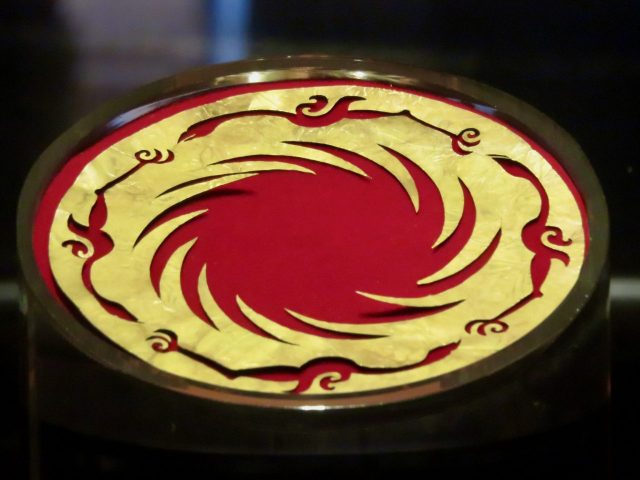
Found by Chance, Treasures From a Golden Age

COLIN SIMPSON
Jinsha Site Museum, Chengdu, China
CHENGDU, the capital of Sichuan province in south-west China, looks like a typical modern Asian city. Drive past the gleaming glass towers of the business district, or visit the vast technology parks, and you get the sense of a place completely in tune with the modern world.
However, it’s also a historic city, and though the traditional Chengdu may not be immediately apparent amid the ultramodern urban landscape, there are some remarkable ancient sites that are well worth seeking out.

Chengdu was founded 2,300 years ago, but the history of civilisation in the area goes back even further. The bronze age Shu kingdom built a city at Jinsha, now a suburb of Chengdu, 3,000 years ago.
The site was unknown until 2001, when it was discovered by chance. Contractors carrying out excavation work for a sewage system for a new development came across some ancient remains, and subsequent excavations by archaeologists uncovered a vast treasure trove of artefacts.


They include a disc of gold foil measuring 12.5 cm across and just 0.2 mm thick, with cut-out shapes of the sun and four birds (main picture above). The beautiful design has become an official symbol of China’s cultural heritage, and can be seen on buildings across the country. The remarkable object was nearly missed by archaeologists digging at the site as, over the millenia, it had become rolled up into a small ball.
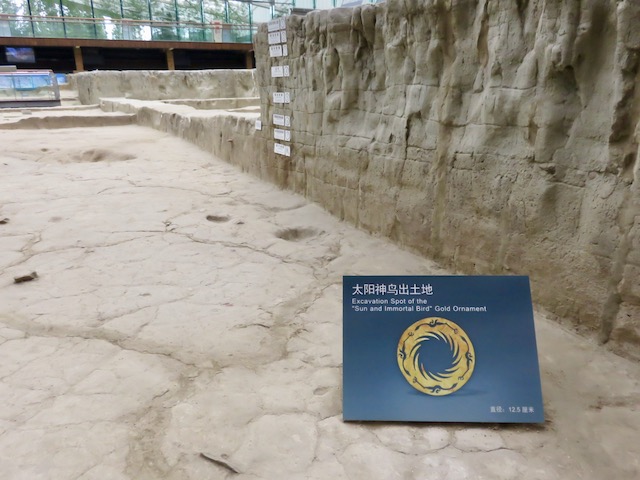
The golden sun bird is just one of thousands of items uncovered, and it and many others are on display at the purpose-built Jinsha Site Museum. They include other gold objects, exquisite bronze pieces and works made of jade. The weird, striking designs and remarkable level of craftsmanship make this an outstanding display. The artefacts, which date from between 1,200 BC and 650 BC, would cause a sensation if they went on show in a European capital.


A large area that was excavated by archaeologists is open to visitors, who can see where the most important objects were found. However, this section is only part of the ancient city’s sacrificial area, which in turn was just one of a number of districts. Much of it remains unexplored, leaving the tantalising possibility of further remarkable discoveries being made in the future. Evidence of the district’s sacrificial role includes tons of elephant tusks and thousands of boar tusks and deer horns.
Visiting a site like this is a reminder of China’s remarkable and complex history, with its numerous dynasties, its defeats and triumphs, and the many advances in science and technology achieved there over millennia. I, for one, was taught nothing about this great and enduring civilization at school.
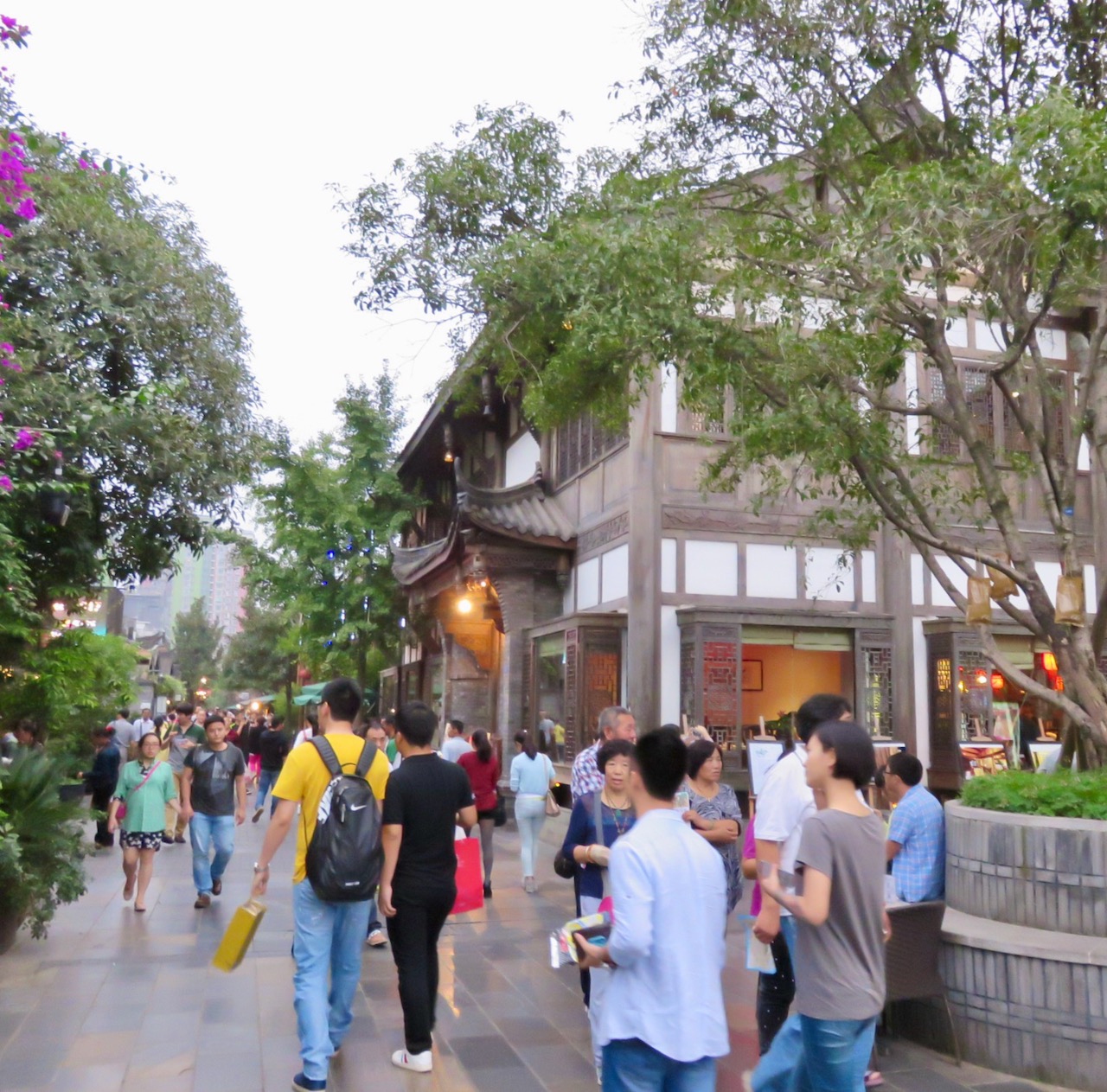

After taking in the wonders of Jinsha, visitors can unwind in Chengdu’s ancient streets at the Kuanzhai Alley Historical and Cultural Conservation Area. Traditional buildings, some dating from the Qing Dynasty (1644-1911), have been restored and turned into shops, bars and restaurants, creating a lively, buzzing tourism and entertainment district.


Top photo: The golden sun bird artefact on display at the Jinsha site.
NEED TO KNOW
ADDRESS: 2 Jinsha Site Road, Qingyang District, Chengdu. GETTING THERE: Metro Line 7, Jinsha Site Museum Station, Exit C; Metro Line 2, Yipintianxia Station, Exit B; buses and the Chengdu Tourist Destination Shuttle also go to the site. OPENING HOURS: 9 a.m. to 6 p.m (last admission 5 p.m.), closed Mondays except on official Chinese holidays. TICKETS: Adults 70 yuan; children aged 7 to 18 and full-time students half-price; over-60s and disabled free. EMAIL: cdjsbwg@jinshasitemuseum.com. PHONE: (+86) 028 87303522.
July 2020
 OFFICIAL WEBSITE is better than many online English-language offerings about tourism sites in China, and gives a good idea of what to expect. READ MORE
OFFICIAL WEBSITE is better than many online English-language offerings about tourism sites in China, and gives a good idea of what to expect. READ MORE

Millennia-Old Engineering Marvel
Sends Water to Modern City
VISITORS to this part of China can see another ancient wonder – the Dujiangyan Irrigation Project. Around 256 BC, a huge channel was hacked through Mount Qingcheng to divert water from the Min River, a major tributary of the Yangtze, and prevent flooding. The system sends water to Chengdu 50 kilometres away, and irrigates fields in the Chengdu Plain.
The design automatically supplies a larger proportion of the river’s water to the city when the level is low, and prevents flooding when it is high. Chengdu’s prosperity through the centuries has relied on this bountiful supply.
The water conservancy system was devised by Li Bing – a governor, engineer and hydrologist – during China’s Warring States period. King Zhao of Qin gave Li Bing 100,000 pieces of silver for the project, and tens of thousands of people are said to have worked on it. Its completion brought an end to flooding in the area, prompting grateful villagers to build a shrine to Li Bing. Mount Qingcheng was the birthplace of Taosim, and there are a number of ancient temples in the area.



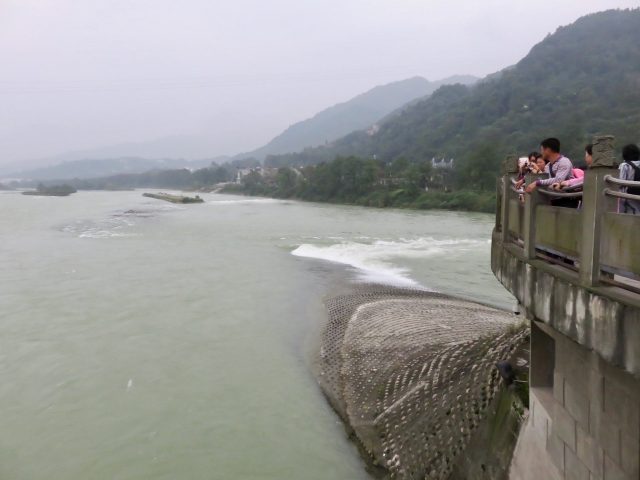
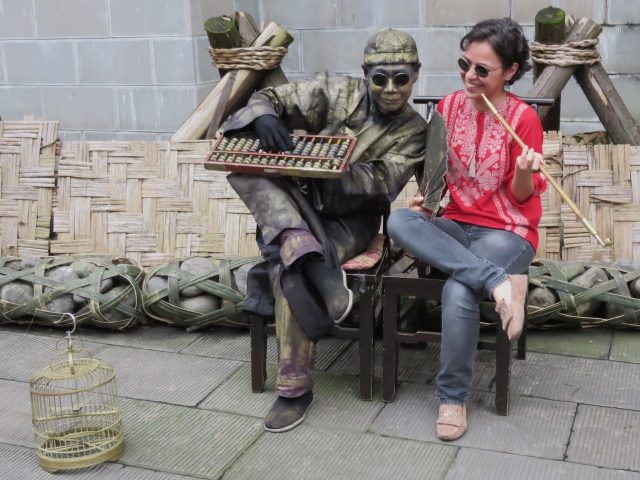
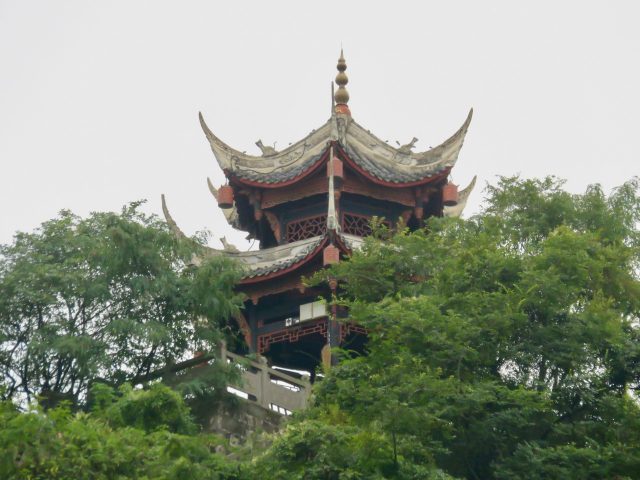


Dujiangyan became a UNESCO World Heritage Site in 2000, with officials describing it as “a major landmark in the development of water management and technology… still discharging its functions perfectly.” Even the devastating 2008 Sichuan earthquake failed to halt the flow of water – the system was not damaged.
The system supplies Chengdu — population 14 million — with 80 per cent of the water it consumes. As well as providing water for agricultural irrigation, it also delivers tapwater and supplies many of Chengdu’s cutting-edge manufacturing plants. The fact that modern factories receive water from this ancient source perfectly expresses the interconnection of old and new in Chengdu.
NEED TO KNOW
LOCATION: On the Min River at the west of Dujiangyan. GETTING THERE: Travel from Chengdu to Dujiangyan by car, high-speed train or bus. OPENING HOURS: March 2 to Nov. 30: 8 a.m. to 6 p.m.; Dec. 1 to March: 8 a.m. to 5.30 p.m. TICKETS: 90 yuan per person. Nearby attractions include the Dujiangyan Panda Base.
July 2020
 UNESCO’s VERDICT: “Dujiangyan Irrigation System is not only a living heritage of 2,000 year-old design and engineering ideas; it is also still in use today.” READ MORE
UNESCO’s VERDICT: “Dujiangyan Irrigation System is not only a living heritage of 2,000 year-old design and engineering ideas; it is also still in use today.” READ MORE
RELATED
 CAVES FULL OF TREASURE: For 56 years, Fan Jinshi tended a treasure trove of ancient Buddhist masterpieces at the Mogao Caves in China. Now she’s been rewarded with “Asia’s Nobel Prize”, worth $2.5 million… READ MORE
CAVES FULL OF TREASURE: For 56 years, Fan Jinshi tended a treasure trove of ancient Buddhist masterpieces at the Mogao Caves in China. Now she’s been rewarded with “Asia’s Nobel Prize”, worth $2.5 million… READ MORE
 BET YOU’LL LOVE THESE PANDAS: It’s a hot, lazy, high-summer morning as I turn up at the Macau Giant Panda Pavilion – and the idle mood extends to the stars of the show… READ MORE, WATCH VIDEO
BET YOU’LL LOVE THESE PANDAS: It’s a hot, lazy, high-summer morning as I turn up at the Macau Giant Panda Pavilion – and the idle mood extends to the stars of the show… READ MORE, WATCH VIDEO
RECOMMENDED
 WELCOME TO OUR WORLD! Afaranwide’s home page – this is where you can find out about our latest posts and other highlights. READ MORE
WELCOME TO OUR WORLD! Afaranwide’s home page – this is where you can find out about our latest posts and other highlights. READ MORE
 TOP 10 VIRTUAL ATTRACTIONS: Many of the world’s most popular tourists sites are closed because of the coronavirus crisis, but you can still visit them virtually while you’re self-isolating. READ MORE
TOP 10 VIRTUAL ATTRACTIONS: Many of the world’s most popular tourists sites are closed because of the coronavirus crisis, but you can still visit them virtually while you’re self-isolating. READ MORE
 SHIMLA, QUEEN OF THE HILLS: Government officials once retreated to Shimla in the foothills of the Himalayas to escape India’s blazing hot summers. Now tourists make the same journey. READ MORE
SHIMLA, QUEEN OF THE HILLS: Government officials once retreated to Shimla in the foothills of the Himalayas to escape India’s blazing hot summers. Now tourists make the same journey. READ MORE
 TEN THINGS WE LEARNED: Our up-to-the-minute guide to creating a website, one step at a time. The costs, the mistakes – it’s what we wish we’d known when we started blogging. READ MORE
TEN THINGS WE LEARNED: Our up-to-the-minute guide to creating a website, one step at a time. The costs, the mistakes – it’s what we wish we’d known when we started blogging. READ MORE
 TROUBLED TIMES FOR EXPATS: Moving abroad can seem an idyllic prospect, but what happens when sudden upheavals or the inescapable realities of life intrude? READ MORE
TROUBLED TIMES FOR EXPATS: Moving abroad can seem an idyllic prospect, but what happens when sudden upheavals or the inescapable realities of life intrude? READ MORE
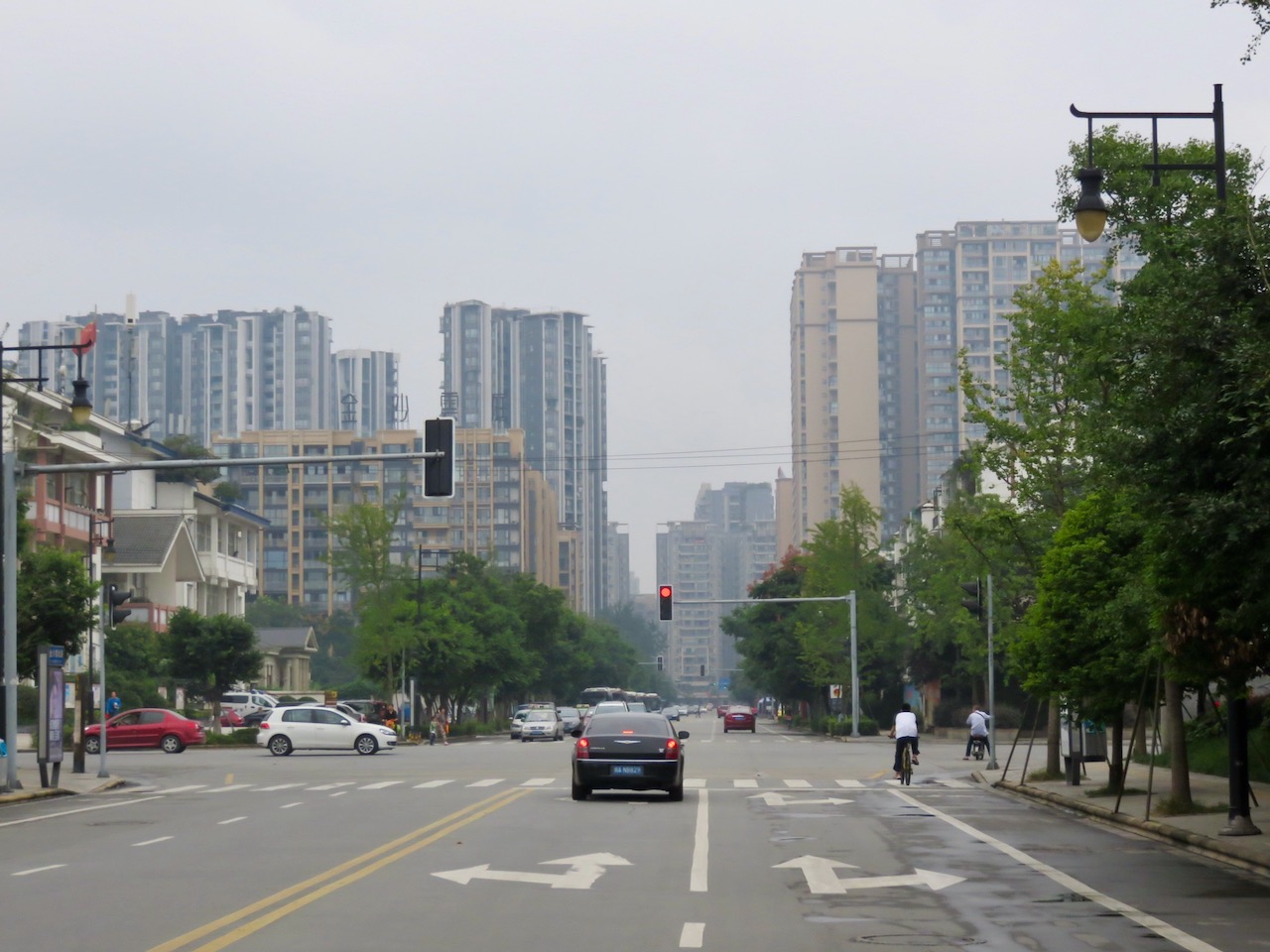
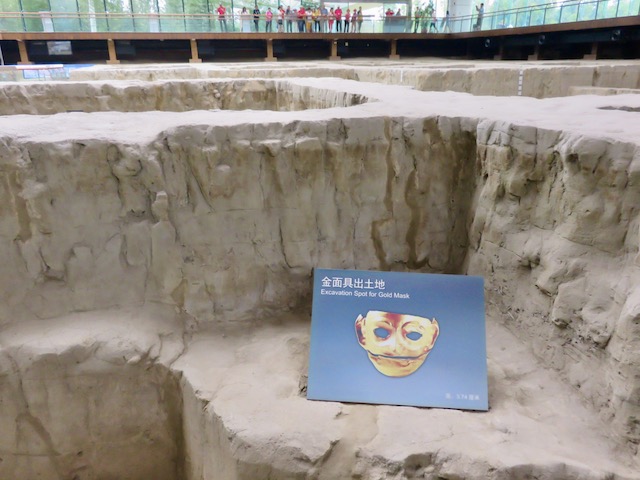
Very well written Sir.. Great tresure!